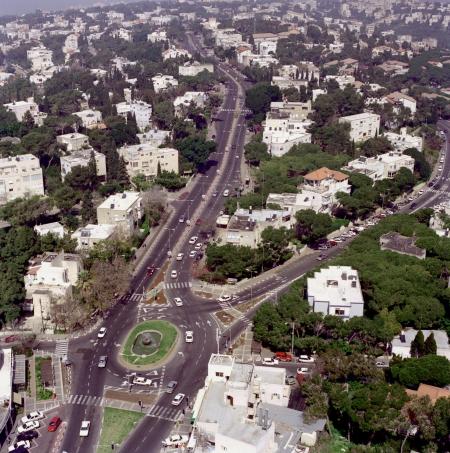MORIYA – HOREV Arterial Upgrade
Project Name
MORIYA – HOREV Arterial Upgrade
Field of Activity
Final Design
Specialization
Metropolitan and Urban Projects
Client
YEFE-NOF
Location
Israel
Project Duration
1990-1991
Project Cost
US$ 10.0 million

|
Services Provided:
|
|
The city of Haifa, Israel's third largest city located on the northern edge of the Carmel Mountain, is characterized by a mountainous difficult terrain. This complex topography imposes severe limitations on the road system structure, forcing it to follow existing ridges and valleys.
One of the primary components of the city's arterial road system is the Carmel Ridge corridor, running north-south on top of the mountain. With a total length of nearly 10 km, it is the only continuous arterial running across the city, operating as a single two lane arterial. Many residential quarters spread on the down hills of the Carmel Mountain on both sides of the corridor connect to it by secondary collector streets. |
In the late 1980 it was decided to upgrade in a staged fashion the entire corridor into a four lane dual carriageway arterial. The plans took under consideration that no demolitions of existing residential structures will be made and the widening will be done utilizing available space in front of the buildings and, partially, the sidewalks. By this occasion it was decided to rehabilitate the existing road and thoroughly renew infrastructure systems passing under the pavement.
TEDEM was awarded with a contract to design the MORIYA-HOREV section of the corridor with an approximate length of 2.0 km, which is located in the corridor core. The work was extremely difficult and tricky due to several constraints: |
|
|
|
|
|
The upgraded and renovated arterial resulted with a 4 lane facility, with local additional spaces for left turns at intersections and bus stops. On major intersections traffic signals were installed. U turn maneuvers impossible to be implemented along the major road were elaborated using adjacent local streets. |
Back
